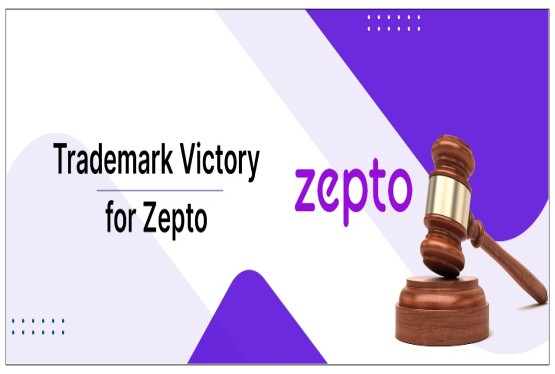The symbols "TM" (™) and "R" (®) are the most popular symbols in the intellectual property sector, appearing on logos, brand names, and slogans. While both symbols relate to trademarks, their legal implications, protection, and enforceability differ significantly. Understanding the distinction between ™ and ® is important for businesses, legal practitioners, and consumers.
This article explores the meaning, usage, and power of ™ and ® in trademark law, focusing on their legal framework under the Trademarks Act, 1999 in India and relevant case laws. It also compares their enforceability and practical implications.
Meaning and Legal Basis of ™ and ®
TM Symbol
The TM symbol indicates that a particular word, phrase, logo, or design is being claimed as a trademark by an entity, even if it has not been formally registered. It serves as a public notice of the claimant's intent to assert trademark rights over the mark.
-
Legal Status: TM can be used without any formal registration. It is primarily a claim of ownership rather than a formal grant of exclusive rights.
-
Protection: The use of TM does not guarantee legal protection under the Trademarks Act, 1999. However, the owner may rely on common law rights to protect their trademark in case of infringement or passing off.
R Symbol
The ® symbol, on the other hand, signifies that the trademark is formally registered with the Trademark Registry under the Trademarks Act, 1999. It provides statutory protection and exclusive rights to the owner.
-
Legal Status: Only trademarks registered under the Trademarks Act, 1999, can use the ® symbol. Unauthorized use of this symbol is prohibited under Section 107 of the Act.
-
Protection: Registration grants the owner exclusive rights to use the trademark in relation to the goods or services for which it is registered, as per Section 28 of the Act. It also allows the owner to initiate infringement actions against unauthorized use.
Power and Enforceability: ™ vs. ®
Common Law Rights under TM
The TM symbol is primarily backed by common law rights derived from the principle of "first use." These rights are enforceable under the tort of passing off, which aims to prevent a competitor from misrepresenting their goods or services as those of the trademark owner.
-
Case Law: In N.R. Dongre v. Whirlpool Corporation (1996 AIR SC 2060), the Supreme Court of India upheld the doctrine of passing off, recognizing the rights of a trademark owner even in the absence of formal registration. The Court ruled that prior use of a mark creates an actionable right against misrepresentation.
-
Limitations: Passing off requires the claimant to prove goodwill, misrepresentation, and damage, which can be a complex and time-consuming process.
Statutory Rights under ®
The ® symbol provides stronger legal protection due to statutory recognition under the Trademarks Act, 1999. Registration offers several advantages:
1. Exclusive Rights: Section 28 grants the registered owner exclusive rights to use the trademark and prevent others from using it without authorization.
2. Legal Presumption of Ownership: Registration serves as prima facie evidence of ownership, shifting the burden of proof to the infringer.
3. Infringement Remedies: The owner can file an infringement suit under Section 29 of the Act. Unlike passing off, infringement does not require the owner to prove goodwill or damage.
-
Case Law: In Cadila Health Care Ltd. v. Cadila Pharmaceuticals Ltd. (2001 PTC 300 SC), the Supreme Court emphasized the importance of registration in preventing confusion and protecting consumer interests. The case highlighted the enhanced protection available to registered trademarks.
Comparison of ™ and ®
|
Aspect |
TM (™) |
R (®) |
|
Legal Basis |
Common law rights |
Statutory rights under the Trademarks Act, 1999 |
|
Registration |
Not required |
Mandatory |
|
Protection Scope |
Limited to passing off actions |
Comprehensive, includes infringement actions |
|
Burden of Proof |
On the claimant to prove goodwill and damage |
On the defendant to disprove infringement |
|
Remedies |
Injunction and damages under passing off |
Injunction, damages, and penalties for infringement |
|
Symbol Usage |
Free for any claimed trademark |
Restricted to registered trademarks |
Advantages and Limitations
Advantages of ™
-
Ease of Use: The TM symbol can be used immediately without any legal formalities.
-
Cost-Effective: No registration fees or legal processes are required.
-
Common Law Recognition: Offers protection under the doctrine of passing off.
Limitations of ™
-
Limited Protection: Relies on common law rights, which are weaker compared to statutory rights.
-
Burden of Proof: Claimant must establish goodwill, misrepresentation, and damage.
-
No Statutory Remedies: Cannot file infringement suits under the Trademarks Act, 1999.
Advantages of ®
-
Strong Legal Protection: Provides statutory rights and remedies under the Trademarks Act.
-
Exclusive Rights: Grants the owner exclusive rights to use the mark.
-
Legal Certainty: Registration creates a presumption of ownership and validity.
-
Infringement Action: Enables the owner to initiate infringement proceedings.
Limitations of ®
-
Cost and Time: Registration involves fees and a lengthy examination process.
-
Geographical Limitations: Protection is limited to the jurisdiction of registration.
-
Maintenance: Requires periodic renewal to retain registration.
International Perspective
The distinction between TM and ® is recognized globally, with similar principles applicable in jurisdictions such as the United States, the United Kingdom, and the European Union. For example:
-
In the United States, trademarks are protected under the Lanham Act, 1946, with common law rights available for unregistered marks and statutory rights for registered marks.
-
In the European Union, the EU Trademark Regulation governs trademark registration, granting exclusive rights to registered trademarks.
The global trend underscores the superiority of registered trademarks in terms of legal protection and enforceability.
Practical Implications for Businesses
1. Brand Strategy: Businesses should consider registering their trademarks to gain statutory protection and enhance their brand's credibility.
2. Preventive Measures: Using the TM symbol during the initial stages of brand development can signal intent to claim ownership, deterring potential infringers.
3. Legal Support: Consulting with trademark attorneys can ensure compliance with legal requirements and maximize protection.
Conclusion
From a legal perspective, the ® symbol is undoubtedly more powerful than the TM symbol. Registration under the Trademarks Act, 1999, grants comprehensive statutory rights, including the ability to initiate infringement actions and claim exclusive ownership. While TM offers limited common law protection, it cannot match the enforceability and certainty of a registered trademark.
That said, the TM symbol serves an important purpose during the early stages of a brand's lifecycle, allowing businesses to claim ownership without undergoing the formal registration process. Ultimately, businesses aiming for long-term protection and market dominance should prioritize trademark registration and transition from ™ to ®.
The distinction between ™ and ® highlights the importance of proactive brand management and legal compliance in safeguarding intellectual property.
Frequently Asked Questions
Q1. What is the main difference between the "TM" and "®" symbols?
Ans. The "TM" and "®" symbols both relate to trademarks, but they have distinct legal implications. "TM" indicates that a word, phrase, logo, or design is being claimed as a trademark but has not been formally registered. It essentially serves as a notice to the public of the claimant's intent to assert ownership. On the other hand, "®" signifies that the trademark is officially registered with the Trademark Registry under the Trademarks Act, 1999.
Q2. Which symbol provides stronger legal protection?
Ans. The "®" symbol provides significantly stronger legal protection than "TM." Registered trademarks under the Trademarks Act, 1999, offer exclusive rights, stronger remedies against infringement, and a higher level of legal certainty compared to trademarks protected only by common law rights, as is the case with the "TM" symbol.
Q3. Can I use the "®" symbol even if my trademark is not registered?
Ans. No, you cannot. Unauthorized use of the "®" symbol is prohibited under the Trademarks Act, 1999. Only trademarks that are officially registered with the Trademark Registry can use the "®" symbol.
Q4. What are the advantages of using the "TM" symbol?
Ans. The "TM" symbol is easy to use and can be applied immediately without any formal registration process. It can serve as a notice to the public of your claim of ownership over the mark and may deter potential infringers by signaling that you intend to protect your brand.
Q5. When should I consider registering my trademark and transitioning from "TM" to "®"?
Ans. If you are serious about protecting your brand and maximizing its value, it is highly recommended to register your trademark. Registration provides stronger legal protection, enhances brand credibility, and allows you to take legal action against infringers more effectively.






























_(b)_of_the_Trademark_Act,_1999_(1)_crop10_thumb.jpg)



_crop10_thumb.jpg)




























_crop10_thumb.jpg)
_crop10_thumb.jpg)






_crop10_thumb.jpg)








_crop10_thumb.jpg)



_crop10_thumb.jpg)





























_crop10_thumb.jpg)

















_crop10_thumb.jpg)






_crop10_thumb.jpg)











































































































































_crop10_thumb.jpg)




































_crop10_thumb.jpg)












_crop10_thumb.jpg)





























